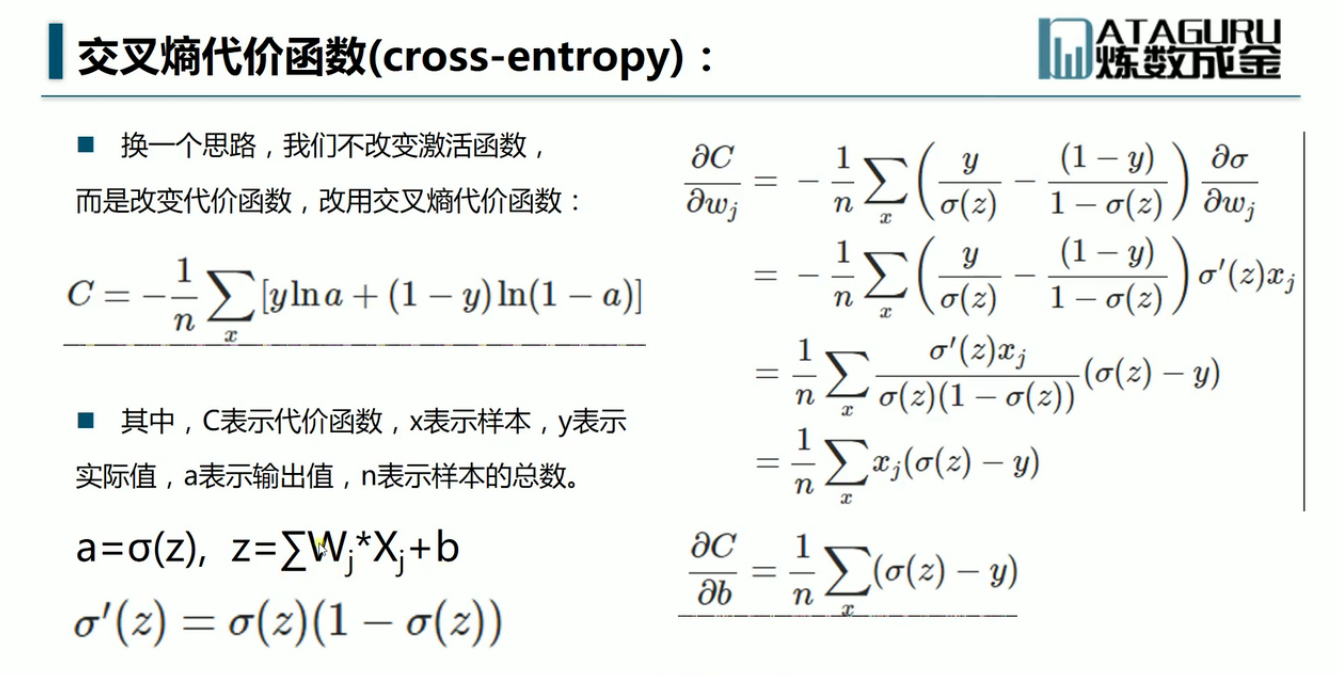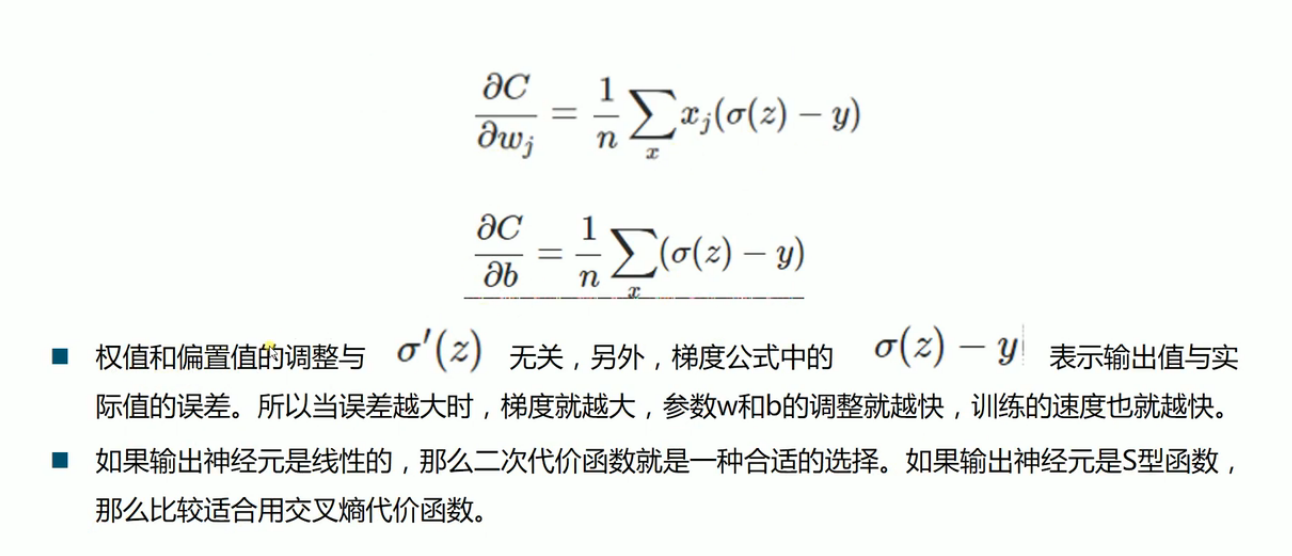二次代价函数
交叉熵
交叉熵代码如下
# -*- coding:utf-8 -*-
# -*- coding:utf-8 -*-
import tensorflow as tf
from tensorflow.examples.tutorials.mnist import input_data
#载入数据
mnist = input_data.read_data_sets("MNIST-data/", one_hot=True)
# 每个批次的大小
batch_size = 100
# 计算一共有多少个批次
n_batch = mnist.train.num_examples // batch_size
# 定义占位符
x = tf.placeholder(tf.float32, [None, 784])
y = tf.placeholder(tf.float32, [None, 10])
# 创建神经网路
W = tf.Variable(tf.zeros([784, 10]))
b = tf.Variable(tf.zeros([10]))
prediction = tf.nn.softmax(tf.matmul(x, W)+b)
#交叉熵
loss = tf.reduce_mean(tf.nn.softmax_cross_entropy_with_logits(labels=y, logits=prediction))
train_step = tf.train.GradientDescentOptimizer(0.2).minimize(loss)
init = tf.global_variables_initializer()
correct_prediction = tf.equal(tf.argmax(y, 1), tf.argmax(prediction, 1)) # 返回一维张量中最大的值所在位置
accuracy = tf.reduce_mean(tf.cast(correct_prediction, tf.float32)) # 准确率
with tf.Session() as sess:
sess.run(init)
for epoch in range(21):
for batch in range(n_batch):
batch_xs, batch_ys = mnist.train.next_batch(batch_size)
sess.run(train_step, feed_dict={x: batch_xs, y: batch_ys})
acc = sess.run(accuracy, feed_dict={x: mnist.test.images, y: mnist.test.labels})
print("Iter " + str(epoch) + ",Testing Accuracy" + str(acc))


